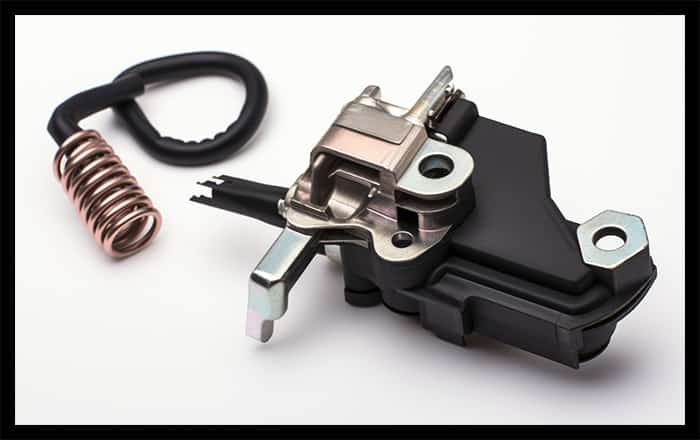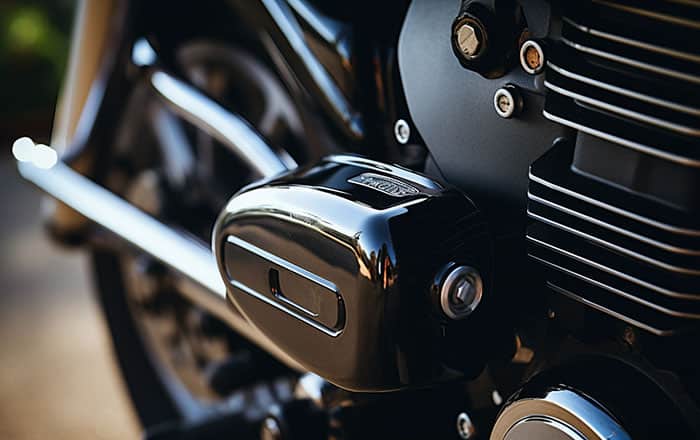Mastering Motorcycle Mechanics: Bypassing the Neutral Safety Switch

As motorcycle enthusiasts, we are constantly seeking ways to optimize our riding experience and unleash the full potential of our machines. One component that plays a crucial role in motorcycle safety is the neutral safety switch (NSS). It is designed to prevent accidental starts while the motorcycle is in gear, ensuring that we engage the clutch and achieve a smooth and controlled ride. However, there are situations where riders may consider bypassing the NSS to gain more control over their motorcycles. In this article, we will explore the ins and outs of bypassing the neutral safety switch, offering valuable insights and guidance to fellow riders.
What is Neutral Safety Switch?

Before delving into the bypassing process, let’s take a moment to understand the purpose and function of the neutral safety switch. The neutral safety switch (NSS) is an important component installed in motorcycles and other vehicles with manual transmissions. Its primary function is to prevent the engine from starting when the transmission is in gear, thus ensuring the safety of the rider and preventing accidental movement of the vehicle.
The NSS is typically located near the transmission or clutch assembly and is integrated into the vehicle’s electrical system. It consists of a series of wires, connectors, and a switch mechanism that operates based on the position of the gear shifter and the clutch pedal. When the transmission is in neutral or the clutch is fully disengaged, the NSS sends a signal to the starter relay or ignition switch, allowing the engine to start normally. However, when the transmission is in gear or the clutch is partially engaged, the NSS interrupts the signal, preventing the engine from starting.
The purpose of the NSS is to ensure that the engine starts only when it is safe to do so. It helps prevent unintentional movement of the vehicle when starting, reducing the risk of accidents, damage to the transmission, or injury to the rider. By requiring the transmission to be in neutral or the clutch to be fully disengaged, the NSS serves as a vital safety feature that promotes responsible and controlled operation of the motorcycle. In addition to its primary role in preventing accidental starts, the NSS may also be interconnected with other systems, such as the reverse gear or the vehicle’s computerized control module. In such cases, the NSS ensures that these systems function properly and engage only when the transmission is in the appropriate position.
It is important to note that tampering with or bypassing the NSS can have significant safety implications. Modifying or bypassing safety features should be approached with caution and only undertaken by experienced individuals who fully understand the risks involved. Prior to making any modifications, it is advisable to consult the motorcycle manufacturer, professional mechanics, or authorized technicians to ensure the safety of both the rider and the motorcycle.
Reasons for Bypassing the Neutral Safety Switch

While the neutral safety switch is an important safety feature, there are scenarios where experienced riders may consider bypassing it. One such situation is during off-road riding or racing, where rapid and frequent shifts between gears are necessary. Bypassing the NSS allows riders to start the motorcycle in gear without having to disengage the clutch fully, enhancing their control and responsiveness. However, it is crucial to emphasize that bypassing the NSS removes a safety feature designed to prevent accidental starts in gear, which can lead to loss of control, accidents, or damage to the motorcycle. Here are a few reasons why riders might consider bypassing the neutral safety switch:
- Off-Road Riding or Racing: Off-road riding and racing often require rapid shifts between gears and quick restarts. In such situations, bypassing the NSS allows riders to start the motorcycle in gear without fully disengaging the clutch. This can provide an advantage in terms of improved control, responsiveness, and reduced time between gear changes.
- Customization and Performance Modifications: Motorcycle enthusiasts who engage in extensive customization or performance modifications might bypass the NSS to accommodate specific aftermarket parts or modifications that may not align with the NSS’s intended function. This allows riders to tailor their motorcycles to their preferences while taking full control over the starting process.
- Mechanical or Electrical Issues: In certain cases, the NSS may become faulty or malfunction due to mechanical or electrical issues. If the NSS is causing persistent problems, bypassing it temporarily can be a troubleshooting method to identify whether the issue lies within the NSS or in another component of the motorcycle’s electrical system.
- Emergency Situations: While not encouraged, there could be emergency situations where a rider needs to start the motorcycle quickly and bypassing the NSS becomes a necessary measure. These situations may include being stranded in a dangerous area or needing to move the motorcycle to a safer location swiftly.
Step-by-Step Guide to Bypassing the Neutral Safety Switch

Disclaimer: Bypassing the neutral safety switch should only be undertaken by experienced riders with a thorough understanding of motorcycle mechanics. It is crucial to exercise caution and ensure that all necessary safety precautions are taken. Always consult the motorcycle manufacturer or professional technicians for guidance specific to your motorcycle model.
- Preparation: Gather the required tools and materials, such as a multimeter, wire strippers, electrical tape, and a wiring diagram or service manual for your motorcycle.
- Identification: Locate the neutral safety switch on your motorcycle. Consult the wiring diagram or service manual to identify the NSS wires and their colors.
- Disconnecting: Begin by disconnecting the motorcycle’s battery to ensure safety. Carefully disconnect the wires connected to the NSS, ensuring you keep track of their original positions.
- Rerouting: Determine the appropriate method for rerouting the NSS wires based on your motorcycle’s design. This may involve splicing the wires or creating a bypass circuit. Refer to the wiring diagram or service manual for guidance.
- Securing the Bypassed Connection: Once the NSS wires are rerouted, ensure that the bypassed connection is secure. Properly insulate and protect the wires using electrical tape or heat shrink tubing, minimizing the risk of electrical shorts or damage.
- Testing: Before reconnecting the motorcycle’s battery, test the bypassed NSS connection. Engage the clutch and attempt to start the motorcycle in gear, ensuring that it starts only when the clutch is fully disengaged or in neutral. Conduct thorough testing to verify the bypassed NSS functionality.
In essense find the wire to the NSS swtich, check if its normally open(NO) or normally closed (NC), then either bride it or cut it. By doing this remember, if the motorbike in gear it will start imediately and take off without clutch pulled in.
Safety Considerations and Legal Implications
Bypassing the neutral safety switch comes with inherent risks. By modifying a safety feature, riders assume responsibility for their actions and must be aware of potential consequences. It is important to understand that bypassing the NSS may result in accidental starts in gear, which can lead to loss of control and accidents. Moreover, modifying or bypassing safety features may have legal implications and could impact insurance coverage. Riders should carefully consider the risks and consult local laws and regulations before proceeding.
As an experienced motorcycle rider with a background in mechanical engineering, I strongly recommend seeking professional advice or assistance when considering bypassing the neutral safety switch. Experienced mechanics, authorized technicians, or motorcycle manufacturers can provide valuable insights specific to your motorcycle model, ensuring your safety and the integrity of your machine. Your safety should always be the top priority, and it is essential to balance your desire for enhanced control with responsible decision-making.
In conclusion motorcycle neutral safety switch plays a vital role in safety, preventing accidental starts in gear and ensuring a smooth and controlled ride. While bypassing the NSS may offer advantages in specific scenarios, it should only be undertaken by experienced riders who fully understand the risks involved. Responsible decision-making and maintaining overall motorcycle safety should always be the guiding principles. Remember, seeking professional advice is essential to ensure your safety and the well-being of your motorcycle.
- Winter Riding Pants Motorcycle - February 25, 2024
- Europe Motorcycle Road Trips - December 3, 2023
- Motorcycle Slang and Terminology - November 28, 2023




